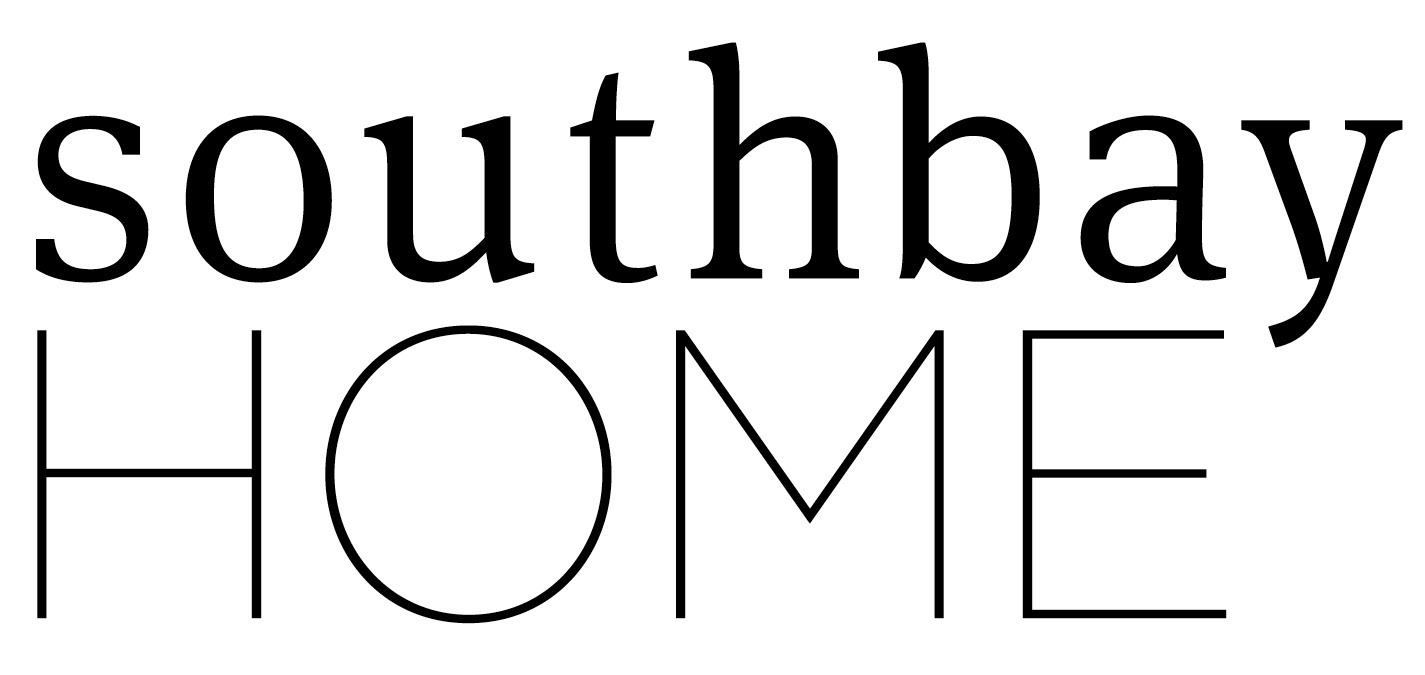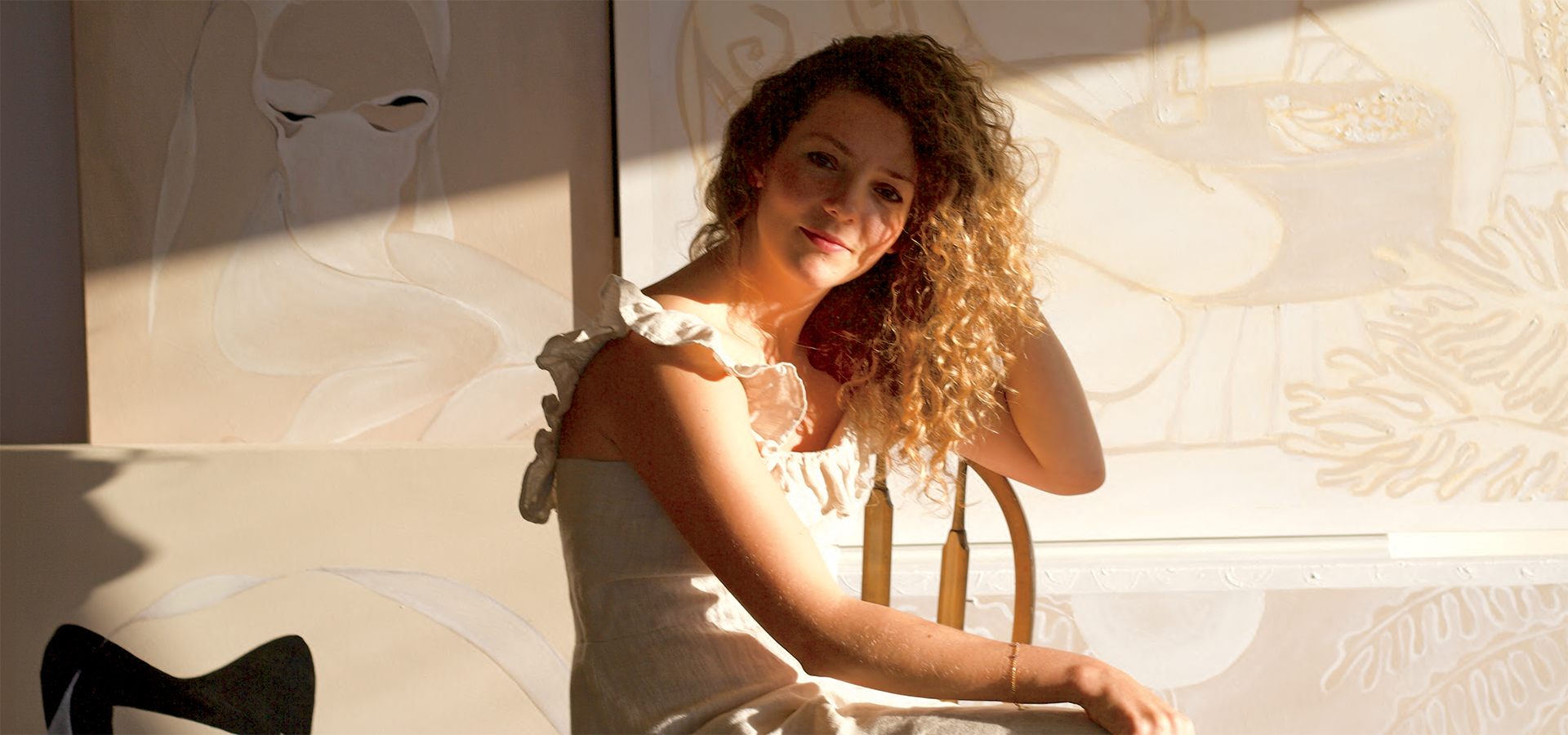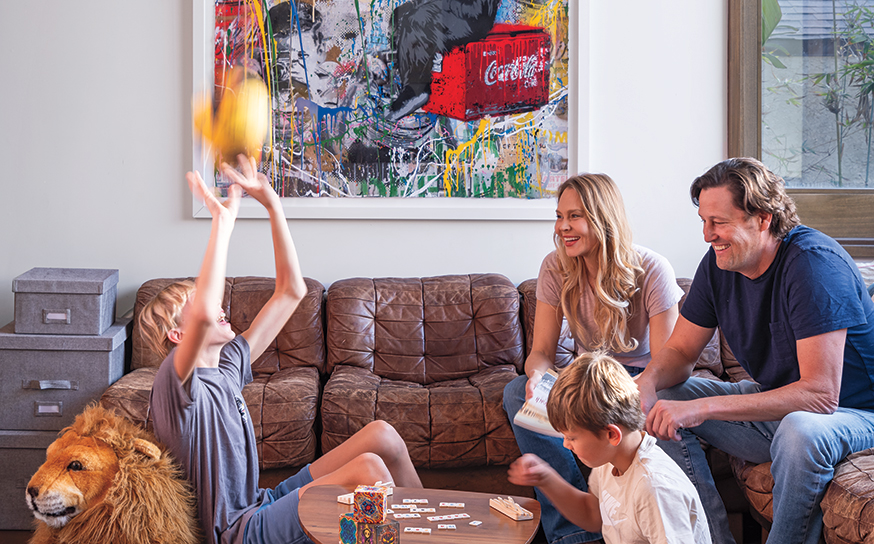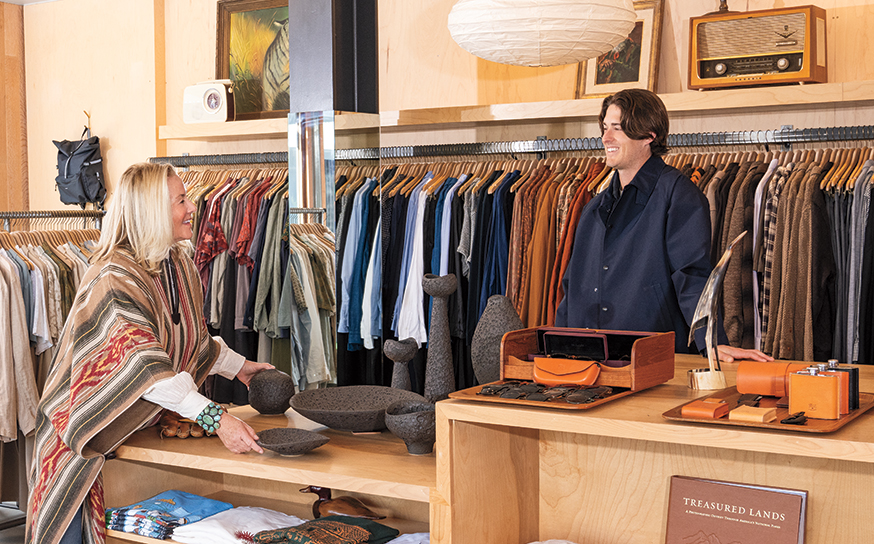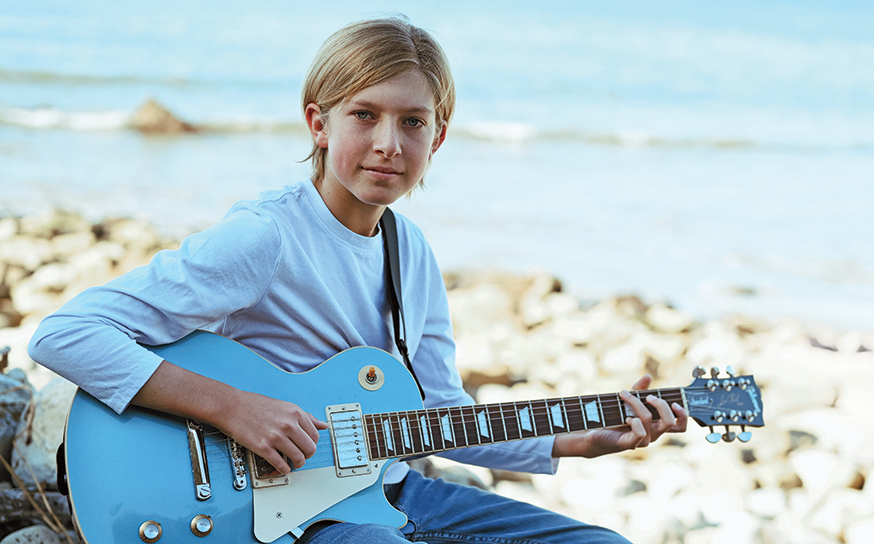Ilse Duijn’s studio in Palos Verdes is alive with light. Golden rays filter through large windows, illuminating canvases awash in soft hues and organic forms. Her paintings—an ode to connection, freedom and femininity—tell a story that begins far from the Pacific cliffs.
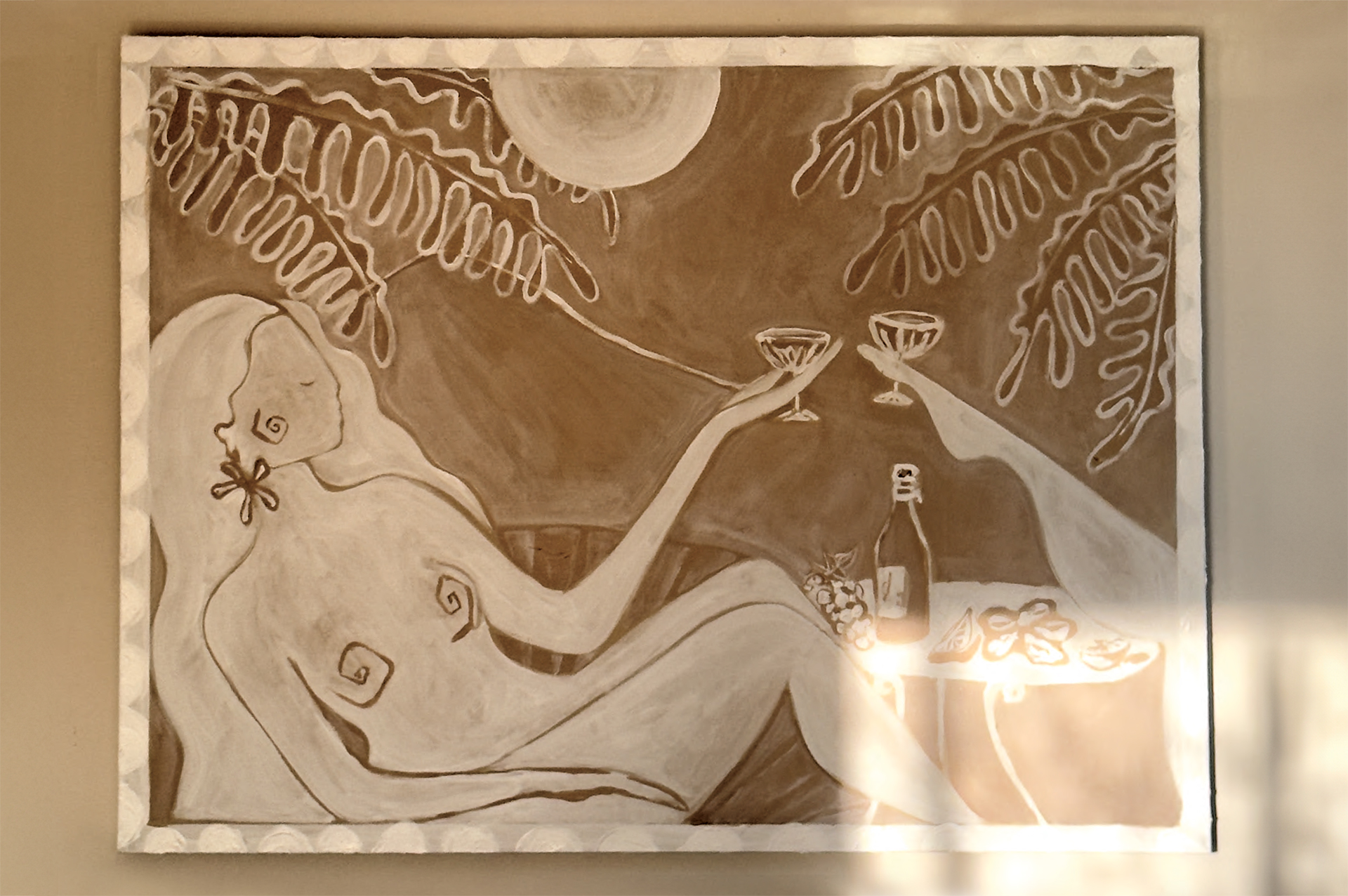
“We lived in Amsterdam and had our two boys there,” she begins, recalling her life before moving to the United States. At the time, Ilse was working full time in a corporate job as a social media manager for a large financial company. “It was fine. I was still on the creative side, but I was slowly dying on the inside.”
Her days were filled with digital campaigns and a suffocating routine. Art had always been her sanctuary—she had painted for as long as she could remember.
“From the moment I could walk, I had my own corner in my parents’ kitchen to paint,” she shares. “But coming from a working-class family, going to art school was never an option. My parents didn’t think there was any money in it.”
Instead, Ilse studied communications and journalism, a practical choice that paid the bills but left her unfulfilled. When her husband, Danny, proposed moving to America to expand his sports technology business, Ilse was resistant.
“At the time I felt like an independent woman with a big job,” she shares. “I thought, ‘What do you think—I’m just going to quit my job because you get an itch?’”
But deep down, she knew her corporate role wasn’t sustainable. “I thought about it over a few weeks, and then I was like, would it be so bad, you know, to quit my soul-sucking job and spend more time with the kids?”
The family’s first stop was New York City, a jarring experience. “I had a 2-year-old and a 5-year-old, didn’t know anyone and had no idea how things worked. I didn’t even know what a CVS was or where to get diapers,” she laughs.
Adjusting to life in a new country while navigating motherhood proved overwhelming. “I hated every second of it. It was the first time I was a stay-at-home mom, and then COVID happened. The world closed down, and I had to homeschool. I was crying every day but didn’t tell my family because I didn’t want to burden them.”
Her husband, who frequently traveled to Los Angeles for work, returned from his trips energized, while Ilse felt increasingly isolated. She remembers, “One day, I just said, ‘You look happy—why don’t we move there?’”
The family relocated to Palos Verdes, a decision that marked the beginning of a transformative chapter in Ilse’s life. “From the moment we landed here, it felt like the right move. It was easier to make friends and socialize with my kids in tow.”
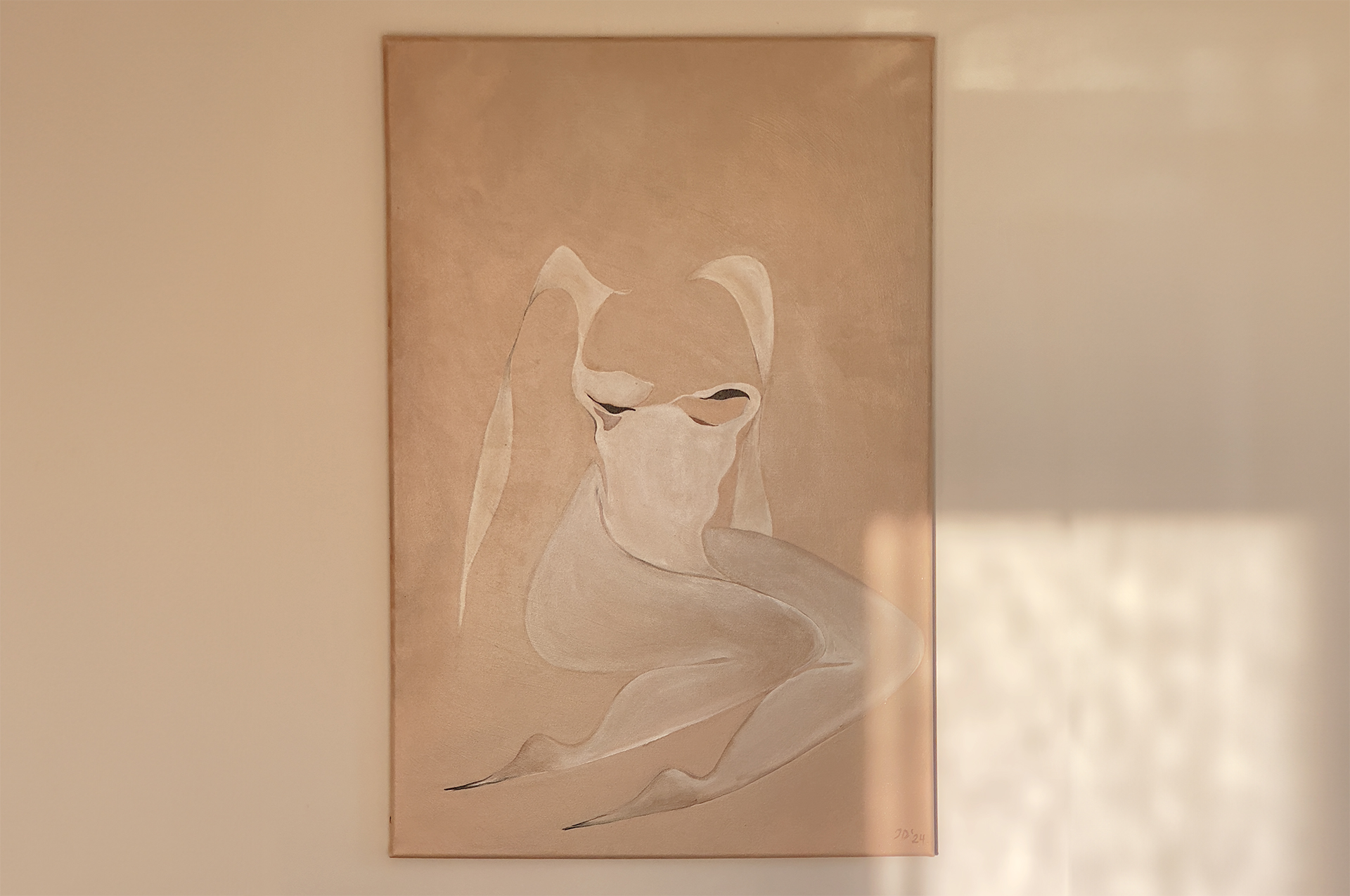
The move to California gave Ilse the space—both physical and emotional—to reconnect with her first love: painting. “I painted my whole life, but now I had the chance to dive back in. When the schools reopened, I couldn’t get enough. I was painting like a million pieces,” she recalls with a smile. “It wasn’t for anyone else; it was for me. I needed to feel like myself again.”
What started as a personal journey soon blossomed into something bigger. Over lunch one day, a group of local mothers encouraged Ilse to share her creativity. “They said, ‘Why don’t you start an art school for kids?’ I’m not the type to enjoy sitting in a hairdresser’s chair or doing my nails, so I thought, why not? I started teaching to earn an income and fund my own art supplies.”
As Ilse poured her energy into painting, her art began to evolve. Inspired by her new surroundings, she embraced the vibrant botanicals and expansive landscapes of California.
“The botanicals here are so foreign to me but so normal for everyone else. They started coming into my paintings,” she says.
Her work also reflects her deep connection to the female form. “I love the female body. For me, it’s all I can paint. I think it’s what I need—what I’m projecting—to one day have around me.”
Themes of connection, freedom and serenity permeate her work. “I like to paint little pieces of paradise—secluded, safe spaces where women can connect to themselves, to nature and to each other.”
Painting became a way for Ilse to process her loneliness and longing for the close-knit friendships she left behind in Amsterdam. “My paintings are like little pieces of a blanket, reminding me of those warm, cozy European nights with friends,” she says.
As Ilse’s art matured, so did her presence in the community. She began exhibiting her work in galleries across the South Bay. Her distinct European style—marked by serene palettes, flowing forms and a touch of Matisse-like simplicity—sets her apart. “It’s not typical of what you find here. It’s got nudes and bottles of Champagne!” she laughs.
The response to her art has been overwhelming. “After five years of painting, people started asking to buy my work,” she explains. “I’ve made more sales in the last two months than ever before. It’s like, oh my God, this is actually happening. I’m pinching myself.”
Looking ahead, Ilse’s goals remain refreshingly simple. “What I’ve learned is that to be happy, you have to keep walking your own path,” she advises. “Cancel the noise and do what makes you happy.”




